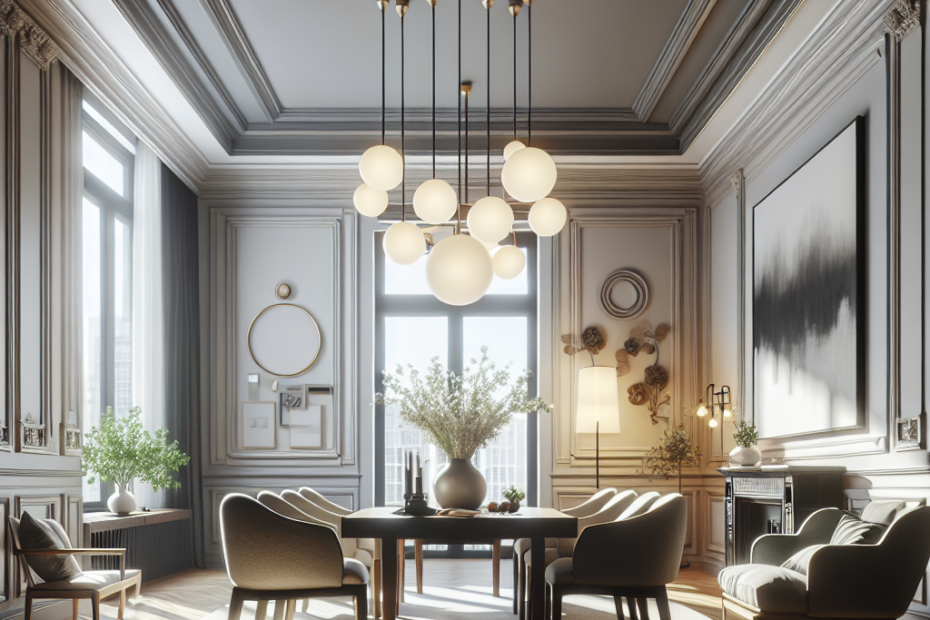Transitional Design: Blending Traditional and Modern Styles
They often feel torn between the comfort of traditional styles and the sleek simplicity of modern aesthetics. Transitional Design might be the perfect solution. This design style bridges the gap between old and new, creating spaces that feel both timeless and up-to-date. By combining elements from both traditional and contemporary design, Transitional Design offers a harmonious blend that appeals to many homeowners.
What is Transitional Design?
Transitional Design is an interior design style that merges traditional and modern elements. It takes the rich, sophisticated textures and forms of traditional design and pairs them with the clean lines and minimalism of modern aesthetics. The result is a balanced, elegant look that feels both cozy and fresh.
Key Features of Transitional Design
- Neutral Color Palette: Transitional Design typically uses neutral colors such as whites, grays, and beiges. This simple color palette creates a calm and inviting environment.
- Clean Lines: While incorporating traditional touches, Transitional Design embraces the simplicity of modern lines and shapes.
- Textured Materials: Mixing materials like wood, glass, and metal adds depth and interest to the spaces.
- Minimal Ornamentation: Unlike traditional styles that might feature heavy decoration, Transitional Design uses minimal decorative elements.
Statistics Supporting Transitional Design
According to a survey by the American Society of Interior Designers, 45% of homeowners prefer a mix of traditional and modern styles when renovating their homes. Furthermore, the National Association of Home Builders found that 35% of new home buyers specifically request designs that blend these two styles (source).
| Features | Traditional Design | Modern Design | Transitional Design |
|---|---|---|---|
| Color Palette | Rich, dark colors | Neutral, bold accents | Neutral colors |
| Lines and Shapes | Ornate patterns | Sleek, clean lines | Clean lines with some curves |
| Materials | Wood, fabric | Glass, metal | Mix of wood, glass, metal |
| Ornamentation | Heavy decoration | Minimalist | Minimal decoration |
How to Achieve Transitional Design
To achieve a Transitional Design in your home, follow these steps:
- Start with Neutral Colors: Use a base of neutral colors on walls and larger furniture pieces to create a calm backdrop.
- Mix Materials: Incorporate a variety of materials in your design. Mix wooden furniture with metal accents, glass tables, and soft, textured fabrics.
- Emphasize Clean Lines: Choose furniture and decor with simple, clean lines to create a sense of balance.
- Add Traditional Touches: Include traditional elements like classic patterns or antique furniture pieces.
- Keep Decoration Minimal: Decorative items should be simple and not overpower the room. A few well-chosen pieces are more effective than an overload of decor.
Why Choose Transitional Design?
Transitional Design offers several benefits:
- Timeless Appeal: This style doesn’t go out of fashion easily, as it balances traditional and modern elements effectively.
- Flexibility: Transitional Design is versatile and can easily adapt to changes in trends and personal taste.
- Comfort: The blend of traditional and modern elements creates a cozy yet sophisticated atmosphere.
Key Takeaways
- Transitional Design blends traditional and modern design elements to create balanced, timeless spaces.
- Key features include neutral color palettes, clean lines, mixed materials, and minimal ornamentation.
- According to ASID, 45% of homeowners prefer a mix of traditional and modern styles.
- To achieve this style, start with neutral colors, mix materials, emphasize clean lines, add traditional touches, and keep decoration minimal.
- Transitional Design offers timeless appeal, flexibility, and comfort.
FAQ
1. What is the difference between Transitional and Contemporary Design?
Answer: Contemporary Design focuses on the current trends and changes over time, while Transitional Design blends traditional and modern styles to create a timeless look.
2. Can I incorporate color in Transitional Design?
Answer: Yes, you can incorporate color, but it is usually done through accents and decorative pieces rather than on large surfaces.
3. Is Transitional Design expensive to achieve?
Answer: It can vary. Since it focuses on balance and neutral colors, it can be achieved on different budgets by carefully selecting pieces.
4. What kind of artwork goes well with Transitional Design?
Answer: Simple, minimalistic artwork with clean lines and neutral colors fits well. Avoid overly ornate pieces.
5. Can I blend Transitional Design with other styles?
Answer: Yes, it is flexible and can integrate well with other styles, but it’s important to maintain balance and cohesion in the design.
